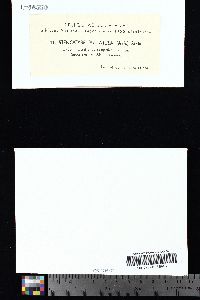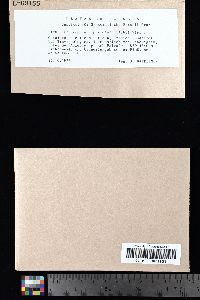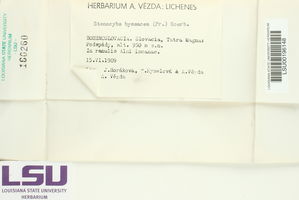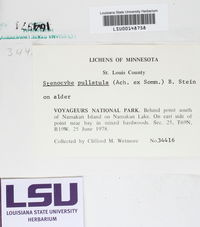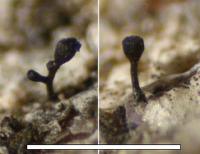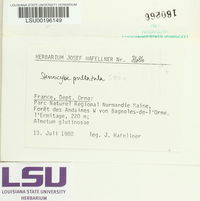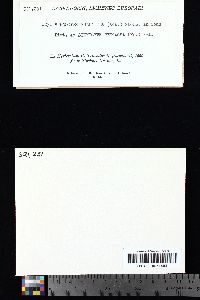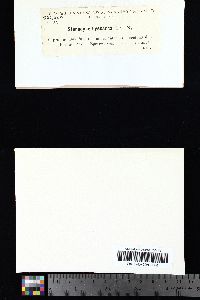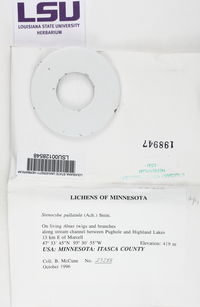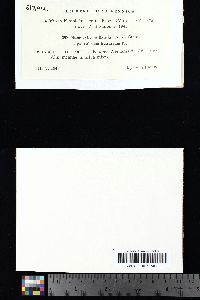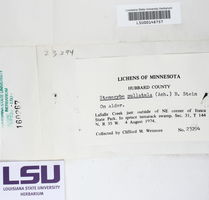
Consortium of Lichen Herbaria
- building a Global Consortium of Bryophytes and Lichens as keystones of cryptobiotic communities -
- Home
- Search
- Images
- Species Checklists
- US States: O-Z >
- US National Parks
- Central America
- South America
- US National Parks
- Southern Subpolar Region
|
|
|
|
Family: Mycocaliciaceae
[Calicium byssaceum Fr., moreCalicium pullatulum Ach., Stenocybe byssacea (Fr.) Nyl. ex Körb.] |
Nash, T.H., Ryan, B.D., Gries, C., Bungartz, F., (eds.) 2004. Lichen Flora of the Greater Sonoran Desert Region. Vol 2. Life habit: saprobic or parasitic Thallus: endosubstratic; algae unassociated, but free-living algae often mixed in Apothecia: 0.19-0.70 mm tall, dark brown to black, shiny, epruinose, with well developed narrowly obconical to cup-shaped excipula that are indistinctly pleated vertically stalk: 0.07-0.08 mm in diam., black, opaque when moist, commonly forked to multi-branched with 2-5 capitula; branches form in the uppermost part and diverge at wide angles, consisting of periclinally arranged, sclerotized hyphae; surrounded by a 3-5 µm thick hyaline gelatinous coat exciple: brown, 8-11 µm thick, formed by 4-7 layers of periclinally arranged, sclerotized hyphae capitulum: lenticular to elongated, cup-shaped to top-shaped, 0.08-0.15 mm wide, with somewhat constricted margin; young ascomata covered by a 6-8 µm thick layer of hyphae parallel with the upper surface; mazaedium: absent; epithecium: dark, 4-6 µm thick, consisting of intricately interwoven sclerotized hyphae; paraphyses: absent; hypothecium: poorly developed, hyaline, consisting of periclinally arranged hyphae 1.5-2 µm in diam. asci: somewhat extruded, narrowly cylindrical, 84-89 x 4.5-6 µm 8-spored ascospores: uniformly pale gray to brown, 1-3 septate, narrowly ellipsoid, straight to slightly curved, 11-17(-19) x 3-5 µm; surface: indistinctly marked with minute warts under the light microscope Spot tests: all negative Secondary metabolites: none detected. Substrate and ecology: on bark of living or decaying twigs and main branches of Alnus, particularly overhanging streams, lakes, or bogs, montane, in mixed conifer forest World distribution: cool temperate and temperate areas of the Northern Hemisphere in Europe and North America (Maine, Michigan, British Columbia and Ontario) Sonoran distribution: Arizona at 2270-2800 m and southern California. Notes: Stenocybe pullatula is characterized by its minute and often branching ascomata, its narrowly ellipsoid spores which at maturity are 3-septate, and its occurrence on twigs of Alnus. It is similar to S. major but differs in having short and branched stalks and spores less than 20 µm long, and in its occurrence on Alnus. |
Powered by Symbiota









